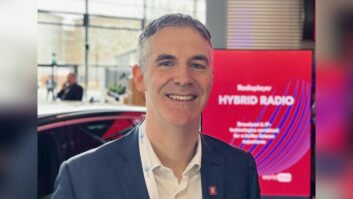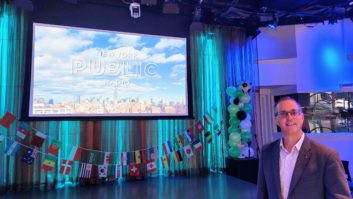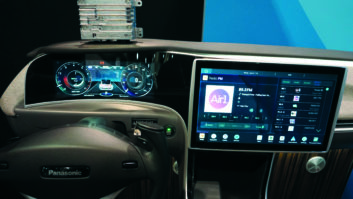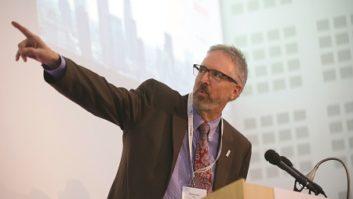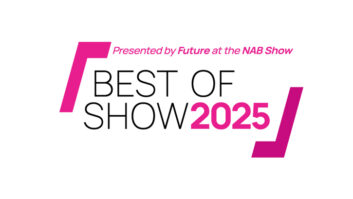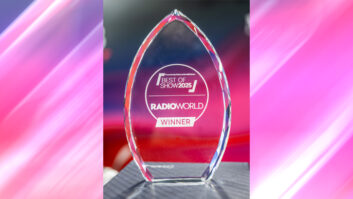David Layer is vice president, advanced engineering at National Association of Broadcasters. He is the primary NAB staff person on NAB’s Radio Technology Committee and the National Radio Systems Committee, a technical standards setting body co-sponsored by NAB and the Consumer Technology Association. This interview is from the recent Radio World eBook “New Directions for HD Radio.”
Radio World: You’ve watched HD Radio develop as closely as anyone in the industry. What is the most important next step for the platform or biggest question we should watch for in 2018?
Click on image to read it.

David Layer: NAB has been raising broadcaster awareness regarding the importance of delivering a quality “metadata” experience (for example, song title and artist, and album artwork for FM broadcasters) to the digital dashboard. As part of this effort we have been working with broadcasters on doing “station audits” to assess how well individual stations look on the dashboard and to offer recommended practices on what should be done. I am hopeful that in 2018 you will see more HD Radio broadcasters deliver the very best experience they can on dashboards, which will improve the listener experience and will better position radio to compete with all of the other audio services becoming available in cars.
RW: The hardware for stations to implement HD Radio has always been something of a complicated topic, but this seems to be changing. What trends are you seeing that engineers should know about?
Layer: Over the last couple of years, equipment manufacturers have been developing lower-cost solutions for broadcasters to implement HD Radio, and one positive development for 2018 would be to see more analog-only broadcasters deciding to “take the plunge” and start broadcasting an HD Radio signal. This lower-cost equipment also provides a good opportunity for existing HD Radio broadcasters to update their aging equipment.

David Layer speaks at a 2017 GM hackathon.
RW: Please update readers about the status of tests into the possibility of “all-digital” operation for U.S. radio.
Layer: For background, currently the FCC only authorizes the broadcast of “hybrid HD Radio” signals, which include both legacy analog as well as digital components. (Note that I am discussing hybrid HD Radio here, not to be confused with “hybrid radio” services like NextRadio that combine over-the-air radio with mobile broadband content.)
Virtually all HD Radio receivers in the marketplace, however, will work not only with these hybrid HD Radio signals but also with a more advanced, all-digital HD Radio signal that offers higher digital throughput and greater robustness, but is not receivable on analog-only radios. Looking to the future when the penetration of HD Radio receivers in the marketplace is higher than it is today and these all-digital services become feasible, NAB has been working with Xperi and broadcasters to test these all-digital signals and develop a technical record which is a necessary prelude to FCC authorization, and in addition to raise awareness among broadcasters and the industry at-large as to the capabilities and benefits of these all-digital services.
For AM, a series of all-digital AM lab and field tests were conducted from 2012 to 2014. In early 2018, NAB plans to do some limited all-digital FM field testing, and we plan to discuss this test program and share some results at the 2018 NAB Show during the Broadcast Engineering and Information Technology Conference.
[Read more: “NAB Tests Address Digital AM Concerns,” May 2016]
RW: How close are we to seeing voluntary all-digital operation allowed for FM stations on a widespread basis? For AMs?
Layer: I do not foresee FCC authorization of all-digital services in the near future simply because the penetration of HD Radio receivers in the marketplace has not yet reached the level where it would make sense for the broadcast industry to start transitioning from hybrid digital to all-digital.
Having said that, I would not be surprised to see requests for experimental authorization of all-digital services by pioneering broadcasters who are looking to the future and whose circumstances are such that experimentation makes sense.
For example, an AM radio station that has an FM translator might be interested in experimenting with an all-digital AM service, since they can use their AM signal all-digital to reach listeners with HD Radio receivers, and still reach listeners with analog radios with their FM translator signal.
I am very excited about that kind of experimentation, it would be a great way to raise consumer awareness as to the benefits of all-digital for AM, and it also highlights how important FM translators can be for AM broadcasters in a possible transition to an all-digital service.
RW: What other technical issues is the National Radio Systems Committee or NAB watching with digital radio?
Layer: One exciting project the NRSC is working on right now is an updating of the NRSC-G200 Guideline, “Harmonization of RDS and IBOC Program Service Data (PSD),” to address the widespread use by radio broadcasters of streaming their audio programs over the internet. It is important for broadcasters to provide a good “metadata” experience not just on over-the-air receivers but also to streaming audio players. The goal is for the updated NRSC Guideline to help broadcasters understand the different metadata capabilities of all platforms that radio listeners are using, and to offer information on how to efficiently provide a premium metadata experience to all of these platforms.
